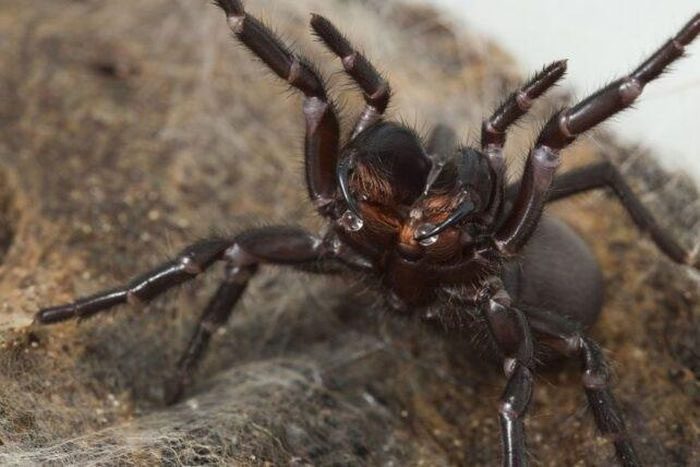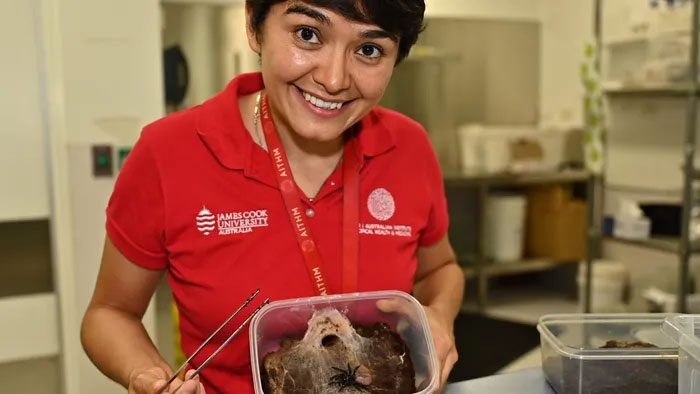A new analysis of funnel-web spiders reveals that factors such as heart rate and defensive behavior may influence the distribution of chemicals in their venom-producing fangs.
Science Alert reports that the venom of funnel-web spiders is a complex mixture with many potential applications, including natural pesticides and pharmaceuticals. Additionally, the venom’s antivenom properties are utilized to treat the potentially lethal bites these spiders can inflict.
Thus, understanding how funnel-web spiders produce these mixtures will aid in the effective extraction and utilization of their venom, while also helping scientists uncover its functional roles.
Biologist Linda Hernández Duran at James Cook University (Australia) states that funnel-web spiders possess the most complex venom in the natural world and are highly regarded for their therapeutic potential, with biopesticide properties likely hidden within their venom molecules. Learning more about how these venoms are produced is a step toward unlocking these potentials.

A funnel-web spider in Border Ranges National Park. (Photo: David Wilson).
Identifying Factors Related to Venom Composition
The Australian funnel-web spider is renowned as one of the deadliest species in the world. Statistics indicate that 30 to 40 people are bitten each year, but only male Sydney funnel-web spiders have been responsible for fatalities. The world has not recorded any deaths since the antivenom was introduced in 1981.
However, previous studies have not considered the spiders’ behavior, physical characteristics, or habitats. Therefore, Duran and her colleagues began to investigate these factors.
They collected specimens from four species of Australian funnel-web spiders: Border Ranges (Hadronyche valida), Darling Downs (Hadronyche infensa), the southeastern Australian spider (Hadronyche cerberea), and Sydney funnel-web spider (Atrax robustus).
The tests assessed the gathering, defensive, and climbing behaviors of funnel-web spiders in three different contexts.
The first context involved their predatory behavior. The scientists simulated this by blowing air currents or poking the spiders with tweezers.
The second context was when they interacted with another spider of the same species. The third context involved exploring a new territory.
In these experiments, the research team mapped the spiders’ behaviors and measured their heart rates using laser tracking devices to establish a representative value for their metabolic rates. They then collected venom samples and analyzed them using mass spectrometry.
The research results indicated that three out of four Australian funnel-web spider species showed no relationship between behavior, heart rate, and venom composition. However, scientists noted a difference for the Border Ranges spider, which had a higher heart rate and its defensive capability appeared linked to different venom compositions.
The fact that the other three species did not demonstrate a similar relationship between venom composition and physical factors suggests that this connection may be species-specific.

Ms. Duran has spent considerable time researching funnel-web spiders. (Photo: James Cook University).
Venom Production Linked to Metabolic Processes
Duran’s research has uncovered a clue that venom production and aggressive behavior in irritable spiders both carry a “cost” in metabolic terms.
Specifically, according to the team’s observations, funnel-web spiders may trade off certain behaviors to compensate for these costs, accelerating their metabolic rate to produce venom while reducing movement when threatened. Other strategies may involve adjusting the frequency of bites, modulating venom quantity, and displaying aggression without deploying venomous bites.
This finding could contribute to the development of antivenoms and the study of bioactive components found in funnel-web spider venom.
“For the first time, we have demonstrated how venom components relate to specific behavioral and physiological variables, and we have shown that these relationships depend on context. We have gained valuable insights to explore and better understand the ecological role of venom,” said Hernández Duran.


















































